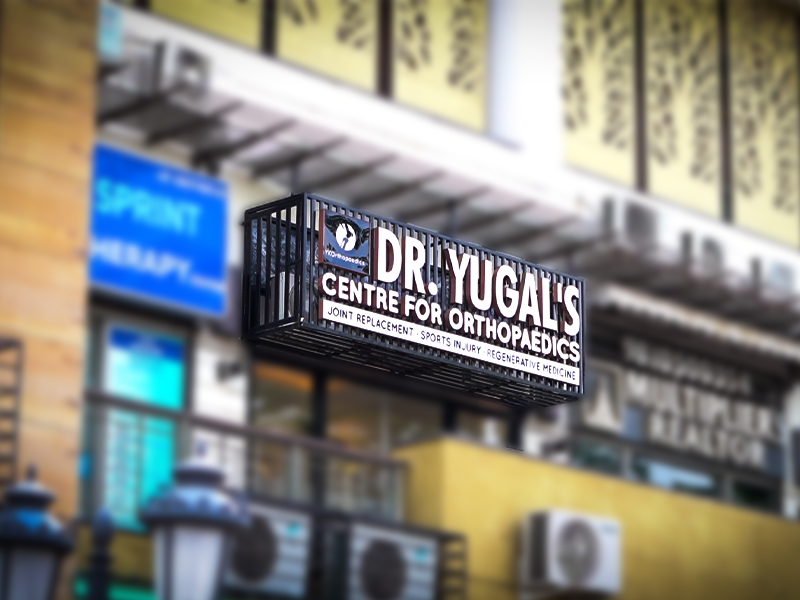Watch Dr Yugal’s informative Reel Content

With over a decade dedicated to Orthopaedics & joint replacement, Dr Yugal Karkhur is a distinguished name in the field. He earned his credentials from Maulana Azad Medical College, New Delhi and subsequently held a significant role as a Senior Registrar at premier establishments like Lok Nayak Hospital and Sushruta Trauma Centre. He now serves with distinction as the Senior Consultant for Orthopaedics and Joint Replacement at Narayana Superspeciality Hospital in Gurugram. Dr Yugal’s pursuit of excellence took him to the Missouri Orthopaedic Institute, USA, where he specialized in joint replacement and Adult hip preservation surgery. His proficiency encompasses arthroscopic surgeries acquired from Safdarjung Hospital’s Sports Injury Center. Gurgaon’s medical community respects him for his associations with CK Birla Hospital, Aarvy Healthcare Superspeciality Hospital, and his innovative venture as co-founder of Orthocure Surgery+ at Orthocure Clinics Pvt Ltd. With 17 published Research Papers and the 2016 Young Ambassador Award from the Asia Pacific Orthopaedic Association to his name, Dr Yugal’s commitment to orthopaedic advancement is evident.












Carving a distinct niche in the Indian medical landscape, Orthocure Healthcare emerges as the nation’s foremost chain of clinics dedicated exclusively to orthopaedic challenges. With an ethos grounded in excellence, Orthocure amalgamates the finest of Indian medical expertise with global collaborative insights, crafting what they proudly term “Centres of Excellence” in orthopaedic care. For those entrusting their orthopaedic concerns to Orthocure, this translates to avant-garde treatments, underscored by globally benchmarked best practices. Their commitment to advancing orthopaedic solutions ensures that patients always receive comprehensive, state-of-the-art care tailored to their unique needs.

Narayana Superspeciality Hospital stands as an epitome of medical excellence in Orthopaedics and beyond. Reflecting world-class quality, it ardently meets both national and international healthcare benchmarks. The hospital’s dedication extends beyond providing high-standard medical care—emphasising an unparalleled patient experience. Narayana guarantees an avant-garde approach to orthopaedic ailments with its state-of-the-art infrastructure, including cutting-edge Operation Theatres and Digital X-Ray facilities. Complementing this ethos is their team of distinguished superspecialists, allied with a compassionate nursing cadre, ensuring every patient receives an accurate diagnosis and exemplary medical care.